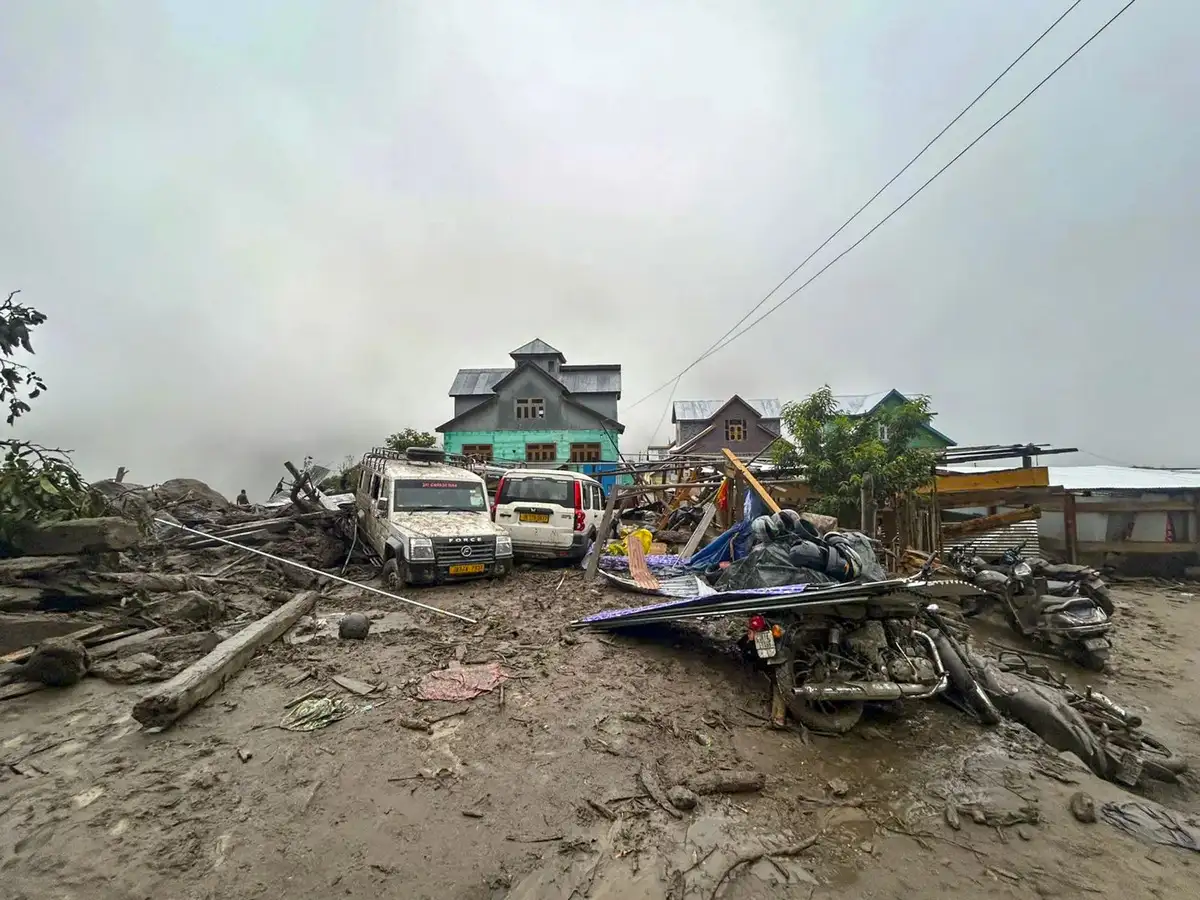A Valley Cut Off by the Sky
By: Javid Amin | 01 Sep 2025
On August 26, 2025, the skies over Warwan Valley broke open with terrifying force. A sudden cloudburst—violent, localized, and unforgiving—struck Margi hamlet and surrounding areas in the Marwah-Warwan region of Kishtwar district, Jammu & Kashmir. In minutes, homes were flattened, livestock buried, and roads erased.
This wasn’t just a weather event. It was a climate reckoning in one of India’s most ecologically fragile and administratively neglected regions. With 190 homes damaged and 45 cattle killed, the disaster laid bare the vulnerability of remote Himalayan communities—and the urgent need for reform.
Damage Assessment and Ground Reality
What Was Lost
The cloudburst impacted six to seven hamlets across Warwan Valley. According to initial reports:
- 190 homes damaged, including:
- ~50 homes completely destroyed
- ~130–140 homes severely compromised
- 45 cattle killed, buried under debris
- Roads and bridges washed away or blocked by landslides
- Water pipelines ruptured, leaving villages without drinking water
- Crop fields and orchards inundated or eroded
Margi, the epicenter, saw entire clusters of homes collapse under the weight of sudden torrents. Families fled with only what they could carry, many taking refuge in school buildings and community halls.
Why Warwan Is So Vulnerable
Warwan Valley is a high-altitude region with limited road access, poor communication infrastructure, and minimal disaster preparedness. Its steep slopes and glacial-fed rivers make it prone to flash floods and landslides—especially during erratic monsoon events.
Despite its beauty and cultural richness, Warwan remains one of the least connected regions in Jammu & Kashmir, with no permanent medical facilities and only seasonal road access.
Relief and Rehabilitation Efforts
Immediate Response
Deputy Commissioner Pankaj Kumar Sharma and SSP Naresh Singh reached Warwan within 24 hours, navigating treacherous terrain to assess damage and coordinate relief.
Key actions included:
- Distribution of one month’s ration to affected families
- Provision of Red Cross relief kits including blankets, tarpaulins, and hygiene supplies
- Deployment of SDRF and revenue teams to clear debris and assess structural damage
- Emergency repair of drinking water pipelines
- Restoration of road access to Nowapachi and adjoining hamlets
Public Meeting and Assurance
Officials held a public meeting in Nowapachi, assuring residents of long-term protective planning. They promised:
- Compensation for livestock and crop loss
- Reconstruction support for destroyed homes
- Permanent disaster shelters in vulnerable hamlets
- Improved communication infrastructure for early warnings
Climate Signals and Environmental Insight
What Is a Cloudburst?
A cloudburst is a sudden, intense rainfall event—often exceeding 100 mm per hour—over a small area. In mountainous regions like Warwan, it can trigger flash floods, landslides, and debris flows within minutes.
Climate Change and Himalayan Extremes
Meteorologists and climate experts warn that cloudbursts are becoming more frequent and intense due to:
- Rising atmospheric moisture from warming oceans
- Shifting monsoon patterns that concentrate rainfall in short bursts
- Glacial retreat and soil destabilization in high-altitude zones
- Deforestation and unregulated construction weakening slope integrity
The August 26 cloudburst fits into a disturbing pattern of extreme weather events across the Himalayas in 2025—from Leh’s 877% rainfall surplus to flash floods in Himachal and Uttarakhand.
Community Voices and Human Impact
Stories from Margi
“We heard a roar like thunder, and then the water came. It was like the mountain fell on us,” said a resident whose home was swept away.
“My cattle were my livelihood. I lost all of them. I don’t know how we’ll survive the winter,” shared a farmer from Nowapachi.
These voices reflect not just loss, but resilience. Families are rebuilding with help from neighbors, volunteers, and local youth groups. School buildings have become temporary shelters, and community kitchens are feeding the displaced.
Youth and Volunteer Response
Local student groups, NCC cadets, and civil society volunteers joined SDRF teams in relief distribution and debris clearance. Their involvement highlights the power of civic engagement in disaster zones.
Policy Gaps and Reform Imperatives
What Needs to Change
Warwan’s disaster wasn’t inevitable—it was predictable. Experts have long warned that remote Himalayan regions lack:
- Early warning systems for cloudbursts and flash floods
- Permanent disaster shelters and evacuation protocols
- Climate-resilient infrastructure including slope stabilization and drainage
- Integrated disaster planning across departments
A Call to Policymakers
The Warwan cloudburst must be a turning point. The Jammu & Kashmir UT administration, in coordination with the central government, should:
- Establish a Remote Valley Resilience Fund
- Deploy satellite-based early warning systems
- Build permanent shelters and medical outposts
- Train local disaster response teams in every hamlet
- Launch a Himalayan Climate Adaptation Mission focused on fragile zones
Bottom-Line
The August 26 cloudburst in Warwan Valley was a tragedy—but it can also be a catalyst. With 190 homes damaged and lives upended, the disaster exposed the fragility of remote Himalayan communities and the urgency of climate adaptation.
Relief efforts were swift, but long-term resilience requires more than ration kits and road repairs. It demands vision, investment, and empathy—from policymakers, planners, and civil society alike.
Warwan may be remote, but its story is central to India’s climate future. Let’s not wait for the next cloudburst to act.



